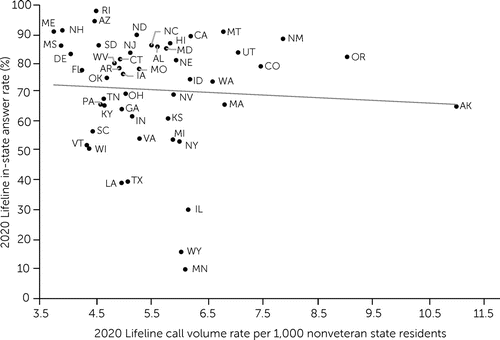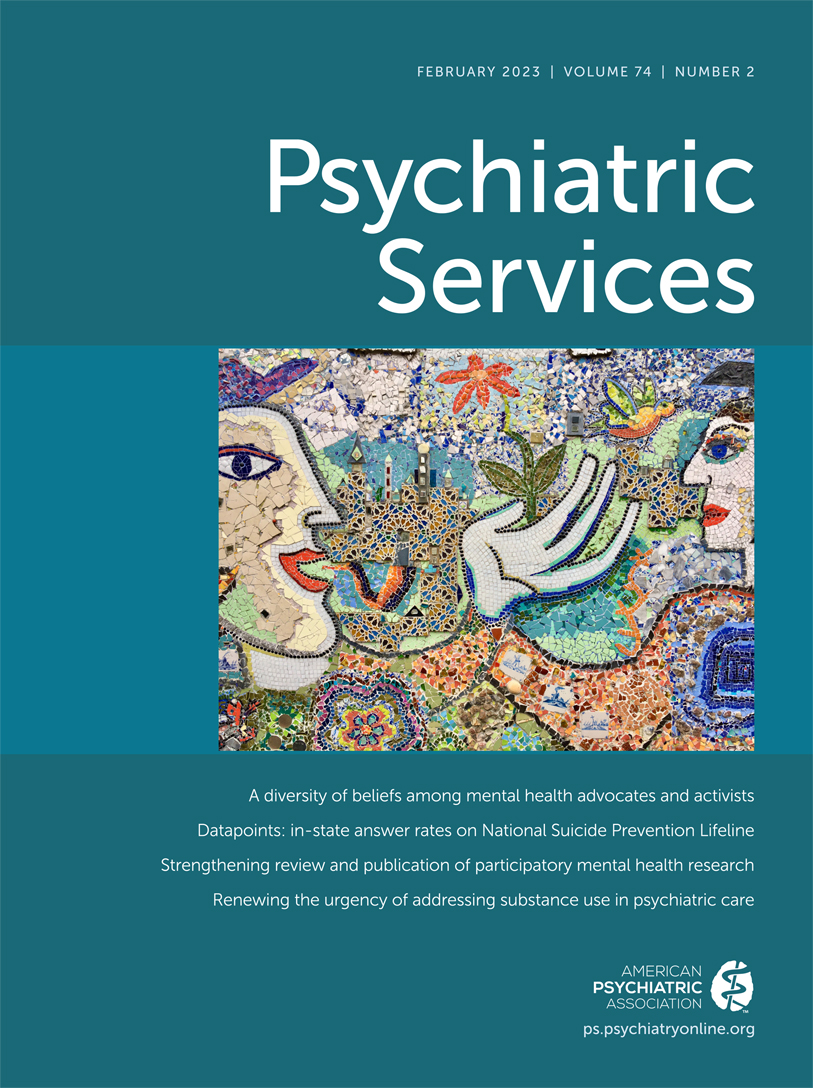National Suicide Prevention Lifeline 2020 In-State Answer Rates, Stratified by Call Volume Rates and Geographic Region
On July 16, 2022, the number 988 will become the new toll-free dialing code for the National Suicide Prevention Lifeline (the major crisis telephone hotline in the United States) (1). Lifeline calls are initially routed to crisis centers within the caller’s state. If the call cannot be answered in a reasonable amount of time, it is rerouted to an out-of-state crisis center. Answering calls within the same state as the caller is considered to be a best practice because crisis center staff can effectively connect callers to local resources. The “in-state answer rate”—defined as the percentage of Lifeline calls originating from a state that are answered in that state—is a Lifeline quality metric, with 90% being the benchmark goal. This analysis characterized variation across states’ in-state answer rates and assessed associations with rates of Lifeline call volume and geographic region.
State-level 2020 data on in-state answer rates and number of Lifeline calls—excluding calls from veterans (state mean=25.0% of calls) and Spanish speakers (state mean=1.4% of calls), because callers from these populations are routed to separate Lifelines—were obtained from publicly available Lifeline reports (2). Using data from the U.S. Census Bureau (3) and Department of Veterans Affairs (4), we estimated the number of nonveteran residents within each state in 2020. We used these data to calculate a rate of Lifeline calls per 1,000 nonveteran state residents. This served as a population size–adjusted measure of demand for Lifeline services.
The mean±SD in-state answer rate was 71.3%±19.5%, and the range was 10.0% (Minnesota) to 98.2% (Rhode Island). Only seven states were at or above 90.0%. Mean in-state answer rates by U.S. Census region were as follows: Northeast, 76.1%; West, 76.7%; South, 70.6%; and Midwest, 62.7% (F=1.32). The mean Lifeline call volume rate per 1,000 nonveteran state residents was 5.54±1.33, and the range was 3.75 (Maine) to 11.00 (Alaska). No correlation was found between a state’s in-state answer rate and its Lifeline call volume rate (Spearman correlation=−0.11, Pearson correlation=0.06) (Figure 1).

FIGURE 1. National Suicide Prevention Lifeline 2020 in-state answer rates and call volume rates for each U.S. statea
a The line is the correlation between in-state answer rate and call volume per 1,000 residents for all 50 states.
We found a substantial variation in Lifeline in-state answer rates across states. The absence of an inverse correlation between in-state answer rates and call volume rates suggests that low in-state answer rates are not the result of high demand for Lifeline services. Understanding how to improve in-state answer rates is important because Lifeline call volume is projected to potentially triple following the launch of the new 988 dialing code (5).
1 : New opportunities to improve mental health crisis systems. Psychiatr Serv 2021; 72:169–173Link, Google Scholar
2 National Suicide Prevention Lifeline State Reports. Rockville, MD, Substance Abuse and Mental Health Services Administration. https://suicidepreventionlifeline.org/lifeline-state-reports/. Accessed Jan 8, 2022Google Scholar
3 State Population Totals: 2010–2020. Suitland, MD, US Census Bureau, 2021. https://www.census.gov/programs-surveys/popest/technical-documentation/research/evaluation-estimates/2020-evaluation-estimates/2010s-state-total.html. Accessed Jan 8, 2022Google Scholar
4 National Center for Veterans Analysis and Statistics. Washington, DC, US Department of Veterans Affairs. https://www.va.gov/vetdata/veteran_population.asp. Accessed Jan 8, 2022Google Scholar
5 988 Appropriations Report. Rockville, MD, Substance Abuse and Mental Health Services Administration, 2021. https://www.samhsa.gov/sites/default/files/988-appropriations-report.pdfGoogle Scholar



